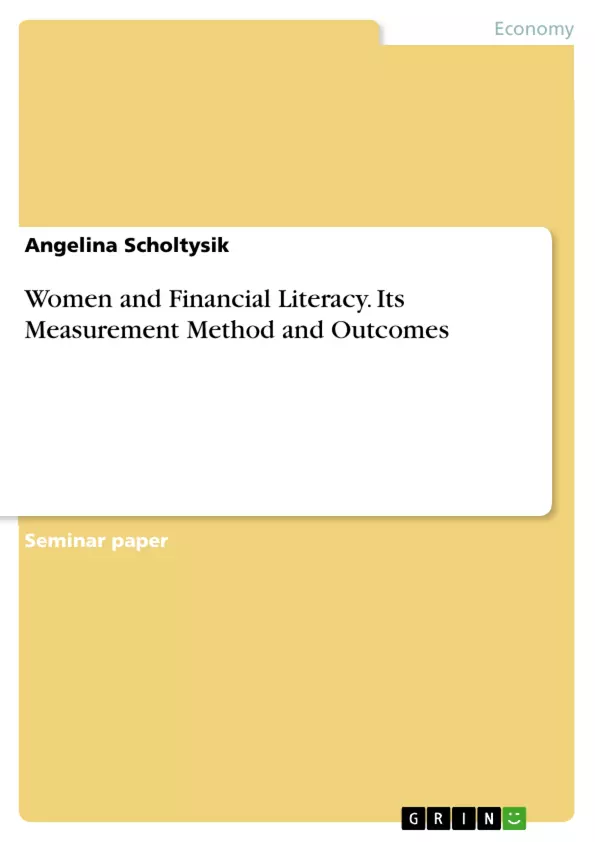The purpose of this paper is to explain financial literacy, its measurement method and outcomes, particularly with respect to gender. Next, we analyze the gender gap by scrutinizing current research on this topic. Finally, we examine current initiatives providing help to women in need of financial education.
Data from different household and health surveys revealed that the level of financial literacy is low worldwide. Particularly regarding the gender effect, this finding is concerning. Women tend to be less sophisticated in financial matters than men, whilst facing more demographic and economic barriers. Despite the effort to measure financial literacy, there is no consensus on the sources of gender differences. This suggests that, although policy makers and economies mount initiatives in order to enhance financial literacy among women around the world, research regarding factors affecting women’s financial education and attitude towards financial literacy is still in its infancy. In addition, to date little evidence is given on their efficacy of those new established financial education programs. In times of economic and demographic change, personal financial literacy is crucial in everyday life decisions and future planning. Since several countries changed their pension schemes from traditional defined benefit pensions to individual- account contribution schemes and financial instruments become more and more complex, individuals have been confronted with decision makings over savings, investments and consumption on their own, bearing the risk of wrong investment choices and bad liquidity management leading to an insecure financial future. Overall and regardless of the country’s economic development and pension scheme, the level of knowledge on financial matter referred to as financial literacy is suggested to be very low around the world.
Inhaltsverzeichnis (Table of Contents)
- Introduction
- Financial Literacy
- Measuring financial literacy
- Critique on measurement methods
- Outcome
- Gender Differences
- Subgroups affected by gender difference
- Factors explaining gender difference
- Gender stereotypes
- Society
- Family
- Ancient institutions
- Policy Responses
- Initiatives supporting financial literacy among women
- Alternatives
- Critique on current financial education programs
- Conclusion
Zielsetzung und Themenschwerpunkte (Objectives and Key Themes)
This paper examines the gap in financial literacy between men and women. It explores the factors that contribute to this gap, including societal expectations, family dynamics, and the influence of traditional institutions. The paper also investigates the effectiveness of policy initiatives aimed at improving financial literacy among women.
- The low level of financial literacy among women worldwide
- Factors contributing to gender differences in financial literacy
- The effectiveness of financial education programs for women
- Policy responses to address the gap in financial literacy
- The impact of financial literacy on women's financial well-being
Zusammenfassung der Kapitel (Chapter Summaries)
The first chapter introduces the concept of financial literacy and its importance in modern society. It highlights the prevalence of low financial literacy globally, particularly among women. The second chapter delves into different methods used to measure financial literacy, including their limitations and the potential impact of these methods on the observed gender gap. The third chapter examines the gender gap in financial literacy, analyzing the subgroups most affected by this difference. It further explores the factors contributing to this gap, such as societal expectations, family dynamics, and the influence of traditional institutions.
Schlüsselwörter (Keywords)
Financial literacy, gender differences, financial education, policy initiatives, women, financial well-being, societal expectations, family dynamics, traditional institutions.
- Arbeit zitieren
- M.Sc. Angelina Scholtysik (Autor:in), 2014, Women and Financial Literacy. Its Measurement Method and Outcomes, München, GRIN Verlag, https://www.grin.com/document/442347



